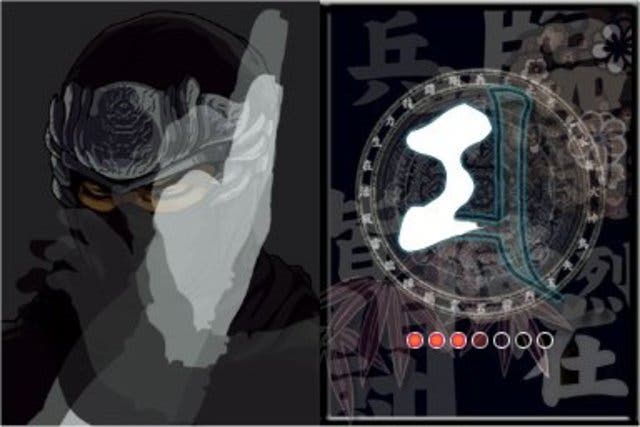Ninja Gaiden Dragon Sword
Scribbleslash.
Button-mashing is a familiar part of the gaming landscape. Who hasn't, at some time or other, fluked their way through a bastard-hard hackandslash battle by jumping around like a Tartrazine freakoid and hammering random attack buttons until something comes off? This kind of combo trickery can be pulled off in a way that - to the untrained eye - looks calculated, skillful and deliberate. But don't be fooled. Even the most hardcore games tend to kneel to the all-conquering might of the persistent, determined button-masher.
In the process of bringing the Ninja Gaiden to the DS, Team Ninja has come up with another brilliantly random gameplay mechanic: screen-scribbling. If the screen is loaded with gurning enemies, your health's going down and your best-laid plans are all going to pot, a quick, concerted scribble winds dear old Ryu Hayabusa up like a clockwork toy. In a flash, he's zipping around the screen slicing people up. It's only one of many of the moves available to you in the course of the 5-6 hour adventure that constitutes Dragon Sword, but it's critical. Indeed, much of the gameplay bears a closer resemblance to getting a spiteful ball point pen to function than skilled, hardcore action-adventuring.
Very typically, the overall idea is to save the world from a deep, dark menace, chasing after bad guys, rescuing hapless maidens; you know, the usual. As ever, you play Hayabusa, chief arse-kicker of the Dragon clan, on a quest to protect the Dragon Sword and ensure the dreaded Spider clan's evil plans to bring darkness to the land don't succeed. Set across 15 relatively brief chapters, you must hunt down the eight dragon stones that give the sword its power, and gradually build up the power required to take the endless supply of increasingly powerful goons down.

To kick off, the game seamlessly and very stylishly introduces you to an array of basic moves performed with the stylus. Holding the DS like a book, Brain Training-style, you discover that Team Ninja has dispensed with the d-pad and face buttons almost entirely, with the stylus used for everything from basic movement and jumping to throwing, dodging and combat manoeuvres. With the touch-screen given over to the main action, the top acts as a map - something which helps a great deal in orientating yourself as you move between various lavishly detailed fixed-perspective locations.
Movement is a simple process of pointing to where you want to go. Jumping is an upward stroke, basic slash attacks are little more than drawing lines across enemies, and firing shurikens, throwing stars, and arrows is as simple as tapping on a specific enemy. More complex combos may involve a double slash up, followed by down, or combinations of other directions. Perhaps the neatest touch of all is the magic attack system, which requires players to touch the icon in the top left and then swiftly fill in a pre-determined symbol on the screen within a time limit to, say, loose off a fireball or fry enemies with lightning. The further you get, the more complex the symbols.


